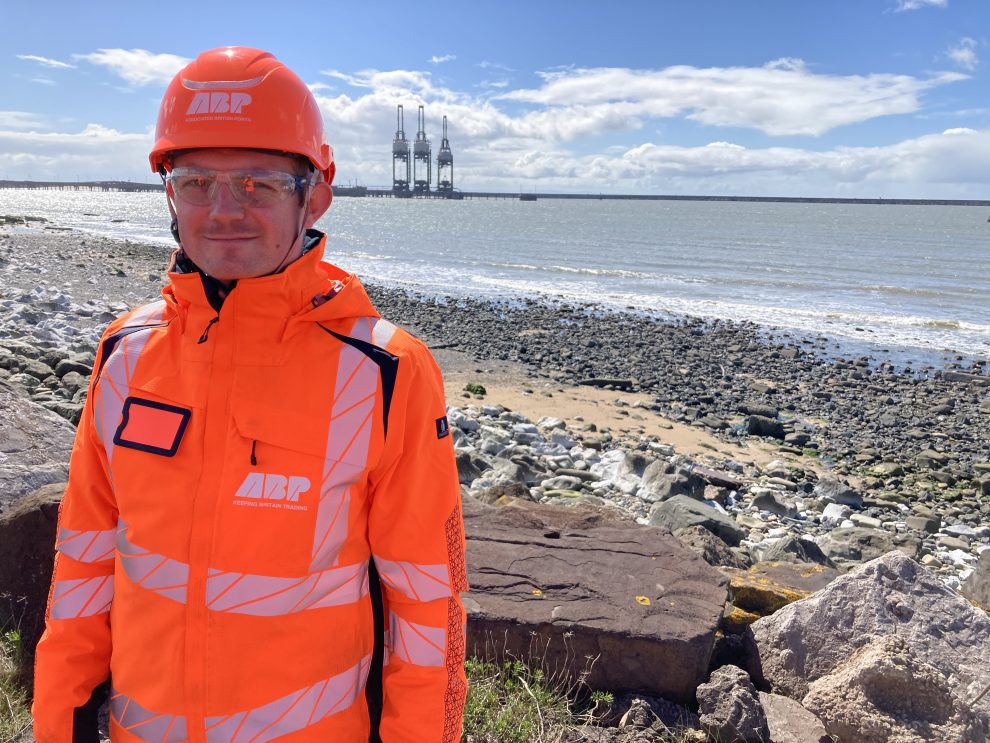DRIVING through the port at Port Talbot you don’t see that many buildings or people. What you see is land – a lot of it – and there are some big ideas to match.
The port has an outer harbour and an inner dock and covers just over 170 hectares, which is roughly 170 rugby pitches. Just under half of it is development land.
For decades cargo-laden ships of up to 170,000 tonnes have brought in raw materials, mainly for Port Talbot’s steelworks, to the deep-water jetty. Smaller bulk carriers transport products including steel, slag, and sand. The port – one of five in Wales owned by Associated British Ports (ABP) – handles some seven million tonnes per year and currently has around 20 customers.
ABP wants Port Talbot to be at the forefront of a new floating offshore wind industry in Wales. Ideally it would like huge wind turbines, their moorings, and sub-structures manufactured and assembled at the port and then towed out to the Celtic Sea, off the south-west cost of Pembrokeshire, where they would be installed.
Floating offshore wind is a new industry compared to fixed offshore wind. Floating offshore turbines would operate in deeper waters than those fixed to the seabed and would require significant up-front investment and ongoing support. But if the experience of fixed offshore wind is anything to go by costs would fall – and low-carbon electricity would be produced for homes and businesses. Conservation charity RSPB Cymru has said it’s vitally important that marine wildlife and habitats are not lost or damaged.
Land at Port Talbot’s port is set to benefit from tax and customs incentives as it is part of the Celtic Freeport, which includes the Port of Milford Haven further west. Freeports are public-private partnerships which aim to open up development land, attract inward investment, and create jobs.
Celtic Freeport’s big plan is a cluster of low-carbon industries and up to 16,000 new jobs. As well as floating offshore wind this would include a new aviation fuel production site using alcohol as its raw material – the project has just been given planning permission by Neath Port Talbot Council – and the production of hydrogen as a source of energy.
It is an exciting time for Ashley Curnow, APB’s new divisional port manager for Wales and the southwest of England. “Floating offshore wind is a once-in-a-lifetime opportunity for Port Talbot and the wider area,” he said. “Our mission is to capture the full scale of floating offshore wind at Port Talbot – that’s where the value is in terms of job creation and GVA (gross value added – a productivity metric). It would be a significant part of what we do here in the future. We want to have everything on our doorstep.”
He said ABP was preparing a planning application to enable the creation of a floating offshore wind industry at Port Talbot and that “first mover advantage” was key. “It’s a global market and and it’s a global race,” he said. “The port’s infrastructure needs to be ready ahead of time.” ABP also wants to decarbonise its own operations.
The UK Crown Estate plans to lease three areas of the Celtic Sea for floating offshore wind farms and envisages them being home to 260 large turbines by 2035. Further areas could be leased after that. Mr Curnow said he expected ABP’s planning application for the port, which would require council and other approval, to be submitted by June next year, with work on new developments starting 18 months after that once consents had been secured.
If all went to plan there could be a range of new skilled jobs – from construction to fabrication, engineering, and project management.
“Skills are really important,” said Mr Curnow. “We are looking at what the skills matrix looks like now and what it looks like in three, five,10 years’ time.”
With steel giant Tata planning a green steel transition at Port Talbot, accompanied by a significant loss of jobs and the potential reduction in raw material imports at the port, there is plenty at stake.
“We are working very closely with Tata to understand the impact on our business,” said Mr Curnow. “They are looking at green steel production and we are looking at a new green industry – how can we combine the two?”
Asked if Tata Steel, for instance, might seek to produce steel for floating offshore wind turbines Mr Curnow said: “It’s something they’ll be talking to [wind] developers about.”
ABP has experience with fixed offshore wind at its ports in Hull and Grimsby. The company has said it plans to invest around £500m in the port at Port Talbot to support floating offshore wind. Port Talbot is also one of two UK ports in the running for £160m of UK Government funding to establish floating offshore wind hubs.
The Crown Estate said floating wind farms in the first three leased areas of the Celtic Sea could generate the equivalent electricity used by four million homes and that this was a conservative figure figure which factored in wind’s inevitable intermittency. Prospective developers need to submit what’s known as a pre-qualification questionnaire by the end of this week.
Crown Estate director for Wales, Rebecca Williams, said floating offshore wind was set to be “a game-changer” for the UK renewable energy market and that coastal communities would benefit.
She said: “Our plans for new floating wind farms in the Celtic Sea are designed to drive the creation of new jobs as well as wider social, environmental, and economic benefits across Wales and beyond.”
New legislation was passed in Wales on April 16 which ministers said would modernise and simplify the process behind developing significant infrastructure projects in Wales including ones in the sea.
For Mr Curnow the Port Talbot posting is something of a homecoming and the arc of his story to date has similarities to that of Welsh industry. He grew up in Aberfan – a place synonymous with coal – attended Swansea University and joined ABP on a graduate scheme.
After various roles he took time out to do an MBA at London Business School before rejoining in his current role in January.
The 32-year-old said it was good to move back to Wales, where talk of a green transition is certainly not lacking, along with his fiancee and their two-year-old son. “I’m very proud to return,” he said. “I think this could be a critical point in history for Wales, especially its ports.”




















